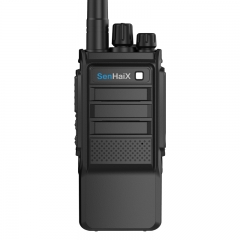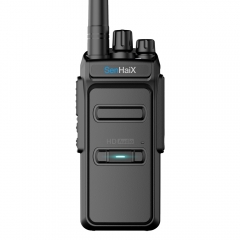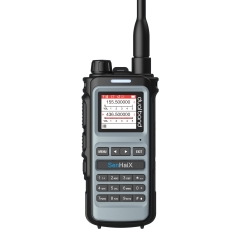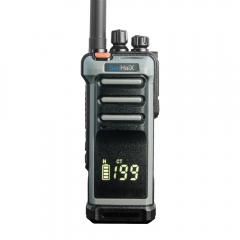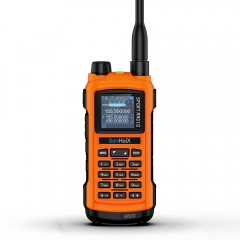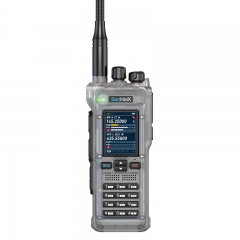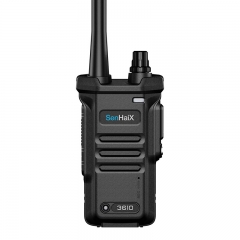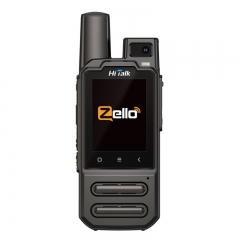Two way radio is the main tool for amateur radio communication. HAM hopes to have a high-performance radio system to send out strong radio waves and receive 59+ complimentary signal reports from the other side. Different products have different properties. Today I'll take you together to comb a variety of walkie-talkie comparison:
Amateur radios VS Professional radios Many new HAM envied professional radios at first, believing that professional intercoms used by the military and police had high performance and long communication distance, while amateur radios, since they were used by amateur individuals, naturally had poor performance. In fact, the professional and amateur in the two way radio does not mean the professional degree of manufacturing technology but the user group is different, amateur radio is not a toy. Different user groups have different application characteristics and needs. The same function may be essential for one type of users and cumbersome for another. For example, amateur radios generally provide the function of direct input of the frequency keyboard. For HAM, this is a very necessary and convenient function. You can directly input the frequency just like making a phone call. Professional users use a handful of fixed frequency points, and the call is also in the inner circle, the preset channel can completely do not need to enter the frequency temporarily, the keyboard to change the frequency function may also cause misoperation to change the current communication frequency, resulting in the failure of communication. Many industry users who use professional radios don't even have a concept of frequency. Two way radios are just a communication tool like mobile phones. Setting the frequency was a pleasure for HAM, a hobbyist, but for business users it was a tedious technical task that required a professional to do, so most professional radios were designed to be computer programming dummies as easy to use as possible, but also easy to manage. In terms of function, amateur radios are definitely more powerful than professional radios. Amateur radios generally have functions such as frequency display, manual panel frequency adjustment, frequency scanning, received signal strength display, multi-gear output power switching, etc., which are lacking in professional walkie-talkies, not to mention advanced functions of amateur models such as dual-band operation, broadband expansion reception, dual-receive channel waiting, etc. Some brand enthusiasts say that some foreign new high-end professional radios can increase panel frequency setting function FPP. There is still a big difference between FPP and amateur radio's VFO mode, which freely uses the frequency. FPP is just equivalent to providing manual channel programming without computer programming. Moreover, even professional radios with FPP function still cannot carry out continuous frequency scanning. The scanning function of professional machines is limited to preprogrammed fixed channels. A few new professional radios have added the function of receiving signal strength display. Because this function is not highly regarded by industry users, the display accuracy of the signal table is still far from that of amateur machines.
Inoltre, la tabella dei segnali di alcune radio professionali può essere visualizzata solo in modalità cluster, mentre la modalità a frequenza diretta convenzionale utilizzata dai radioamatori non può essere utilizzata. Alcune radio professionali offrono una scelta di due livelli di potenza, mentre la maggior parte delle radio amatoriali offre una scelta di tre o quattro livelli di potenza. In termini di prestazioni in radiofrequenza, i radioamatori e i radio professionisti sono alla pari. I due indici più basilari della radio a due vie trasmettono la potenza e ricevono la sensibilità radioamatoriale ha un certo vantaggio. Le radio amatoriali tradizionali a 430 MHz, anche alcuni prodotti domestici, forniscono anche una potenza di uscita di 5 W e molti walkie-talkie professionali UHF controllano la potenza di uscita dell'indice di fabbrica originale di 4 W. La sensibilità di ricezione dei radioamatori è stata tradizionalmente il vantaggio assoluto,
La radio Senhaix 8800 è una radio amatoriale straordinaria. Perché ha molte funzionalità come più modalità di programmazione e ha un aspetto sorprendente.
Alcuni appassionati di macchine professionali hanno avanzato l'argomento secondo cui la radio professionale ha una buona anti-interferenza. In effetti, alcune macchine professionali di alta qualità hanno un eccellente design del circuito RF o adottano esse stesse un design a banda stretta, quindi hanno alcuni vantaggi nelle prestazioni anti-interferenza rispetto alle radio amatoriali con design a banda larga. Tuttavia, l'anti-interferenza può mostrare i suoi vantaggi solo quando c'è una certa intensità di interferenza. Se l'interferenza ambientale stessa è relativamente piccola, la radio ordinaria può funzionare, ha davvero riscontrato un'interferenza ampia ed evidente quale radio bidirezionale non può funzionare, può solo chiedere all'ufficio di gestione dell'alimentazione non in linea di eliminare la fonte di interferenza. Dal rendimento complessivo della radio amatoriale non è molto peggiore della radio professionale.
In generale, i radioamatori sono più adatti all'HAM in termini di prestazioni e funzionalità. A meno che non ci sia un serio coinvolgimento militare o di polizia in HAM, i radioamatori sono la prima scelta assoluta per i radioamatori.



















